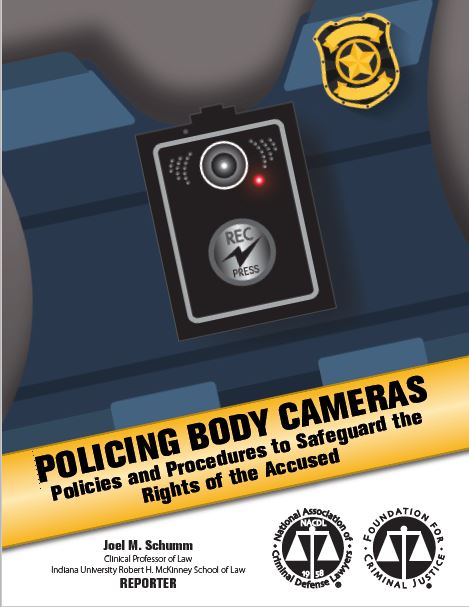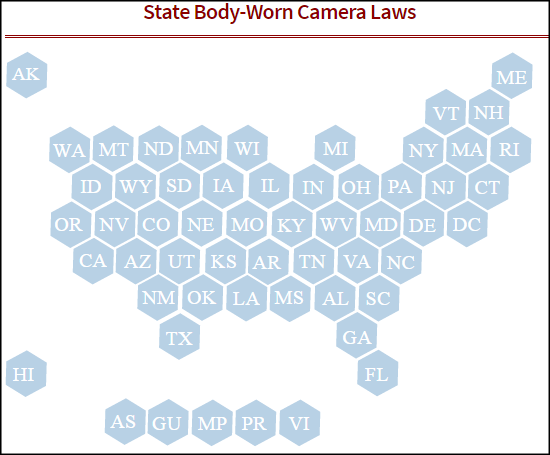BWC Laws
Body-worn cameras are recording devices police officers wear as part of their uniforms to document what they see as they perform their duties. Body cameras continue to be a significant focus for state law makers as they consider and enact legislation to address police-community relations. To date, thirty-four states and the District of Columbia have created laws for body cameras. The body-worn camera laws database provides a list of all thirty-four states along with their specific BWC laws.


